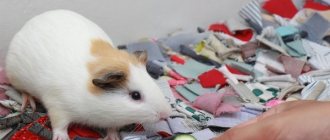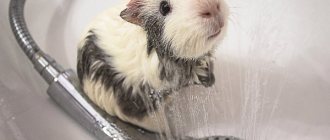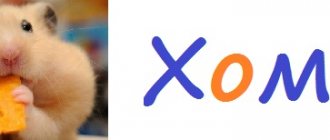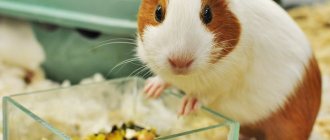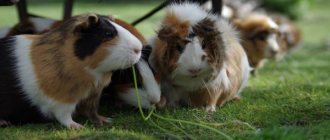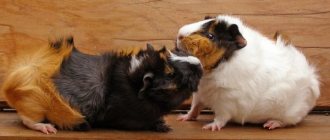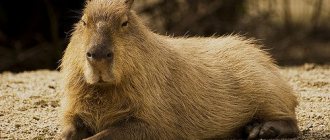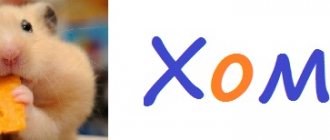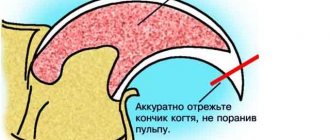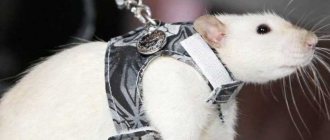- home
- Guinea pig
02/11/2019 Taming a guinea pig is much easier than it seems from the outside. Rodents are easy to train and willingly make contact with a person who treats them well. Each animal has its own character and habits that need to be studied and respected. This will help mutual understanding between the pet and the owner.
If your guinea pig doesn't become tame
It is very rare to find guinea pigs that are not amenable to normal taming methods. This may be explained by the fact that in the very first weeks of life the animals experienced events after which they became especially timid and fearful. Here you can do the following:
- pick up the animal more often. Place him on your lap, stroke him and talk to him in a quiet, calm voice;
- Give your guinea pig green food or especially tasty morsels only from your hands, be patient;
- Lay a thick layer of straw on the bottom of the cage. The animal will be able to hide there and feel protected, but at the same time it will not be completely fenced off from the outside world.
Why tame a pig?
A guinea pig, when it first finds itself in a new home and an unusual unfamiliar environment, experiences stress, anxiety and fear. In this state, it will be difficult for the animal to contact people, preferring to be alone over fun games, training and communication. An untamed animal usually does not allow itself to be stroked or held, striving to quickly hide in its house. A frightened animal may even bite, thus showing a defensive reaction.
Taming a pet is the process of domesticating an animal, which will help establish friendly contact between a person and a guinea pig. By taming an animal, the owner will be able to gain the trust of the baby and create a favorable atmosphere in which the pet will feel comfortable living.
Important. The process of domesticating a pet can take from one to several weeks, depending on the nature of the animal and the environment, so it is very important to approach this matter with patience and understanding.
Training Tips
It is best to accustom your pet to hands during the day. A sleeping animal should not be awakened; it is better to wait until the pig wakes up on its own.
The best time to train your baby is before meals, a few minutes before feeding. After a hearty meal, the animal may not be particularly interested in the treat.
- use of healthy treats;
- speaking in a calm voice;
- stroking the head and back;
- games with animals.
- shouting or speaking in a raised voice;
- touching the back of the back;
- sudden movements;
- holding the animal in the air for a long time;
- ignoring the pet's mood;
- punishing an animal in any way;
- leaving an animal without food or water;
- use of junk food during training;
- Overfeeding your pig treats, especially fruits, nuts or grains.
When the pet gets used to the owner and his hands, you can continue taming through games, using special paper balls that can be rolled slowly in front of the animal, involving it in the game.
How to hold in your hands correctly?
In the process of taming a pet, you need to learn how to hold it in your arms correctly. Holding a heavy animal suspended is not an option; it will hurt. The pig will remember this condition and next time it will not be handled.
The animal is held so that it can lean on the owner - firmly enough, without squeezing, so as not to damage the internal organs. The rodent's physique appears to be strong, but in fact, impacts and falls even from a small height lead to serious injuries and death.
When a completely trusting relationship develops between the pet and the owner, you can begin playing and training together.
What and how to feed your guinea pig
The rodent menu includes fresh and dried herbs, fresh vegetables and fruits, and cereals. Unlike rats and hamsters, guinea pigs eat mostly grass and vegetables rather than grains. Grain should be in the diet of the main characters of this article, but in smaller quantities than their relatives.
List of products for the daily diet of pigs:
- Hay.
- Fresh plants: nettle, dandelion, chamomile, alfalfa, dill, burdock and lettuce.
- Fresh vegetables: carrots, cabbage, beets, cucumber, celery, pumpkin, zucchini.
- Fresh branches of fruit trees and shrubs: apple, raspberry, blueberry, pear. Willow, maple, and ash branches are also suitable.
- Fresh berries and fruits: apple, pear, banana, strawberry, cherry.
Stores sell special dry food for pigs. There is no consensus on whether it is necessary in the daily diet of an animal. Some breeders give their pets one tablespoon of food daily for each individual, considering this a necessity. Other owners limit themselves only to fresh food. But it is absolutely clear that you cannot feed animals with dry food alone. Fresh herbs and vegetables are required in the diet.
It is recommended to add treats to the usual menu two or three times a week. Pigs will love dried fruits and nuts. But they should not be the basis of the diet.
It is strictly forbidden to feed these rodents the following products:
- pasta, bread and other flour products;
- dairy and fermented milk products;
- sausage and meat, as well as fish and eggs;
- potato;
- sugar-containing products;
- mushrooms;
- onion and garlic;
- legumes (peas, beans, etc.), except peanuts.
You need to feed your pig 2-3 times daily. High-quality hay should always be available to the animal.
Your pet's diet should be varied. You cannot feed your rodent the same food every day.
The pig is given treats no more than 2-3 times a week, otherwise it may negatively affect the pet’s health.
You cannot leave an animal without food for a long time. If the pet does not eat for 18 hours, then irreversible changes will begin in its digestive system, which can lead to the death of the animal.
Pigs drink little water, but there should always be a supply of fresh boiled water in the cage.
In winter, instead of fresh herbs, the pig is fed sprouted grains.
The daily portion of food should not be more than 30% of his body weight. If you overfeed your pet, it will develop obesity.
The introduction of new products should be gradual. First, treat your pet with a small piece of a new type of food. Then you need to observe the condition of the animal to see if there are any changes. And if everything is fine with the pet, then you can introduce a new product into the regular diet.
Pigs are sensitive to the quality of food consumed. It is better to remove stale vegetables and rotten hay. Eating stale food will lead to digestive problems in the animal.
Important points
It is much easier to find a “common language” with a pig if you know its preferences:
- Noises or loud noises disturb the animal and make it nervous and unpredictable.
- Dry grass or litter should always be clean and fresh in the cage, as the pig loves to burrow into it.
- The diet must include fresh vegetables and fruits, greens; these are not only vitamins, but also support the digestion process.
- The room should be comfortably warm; pigs do not like drafts.
- It is necessary to accustom your guinea pig to the toilet in one place if it does not immediately find its way.
It takes a very long time for a pig to get used to eccentric people with a loud voice and lively gestures. She is afraid of this behavior because she sees it as a threat.
Guinea pigs are not suitable for families where there is constant noise, with the TV or music turned up at full volume. This must be remembered when choosing this rodent as a pet.
Steps to Taming
It is advisable to begin adaptation and taming of the pet on the 3rd day after the start of its stay in the new home. For the first three days, it is recommended to leave the animal alone, placing the cage with all the necessary items in a suitable, not too busy, but not isolated place. During this time, the animal will get used to the unusual surroundings and new sounds.
Domestication of a pet usually occurs gradually and in stages, and it is recommended to move to the next level strictly after the animal has completely mastered the previous stage. There is no need to rush in this matter.
Treating yourself with a treat
In order to win over your pet, you can treat him with a tasty and healthy treat. For this purpose, you can use a small piece of juicy or dried apple, strawberry, seedless grapes or sweet ripe melon.
The treat should be carefully placed in the bowl, being careful not to make sudden movements. During this process, it is recommended to talk to the animal in a quiet, calm voice.
This is done so that the animal gets used to the owner’s voice.
When the animal approaches the treat without fear, the food should begin to be placed closer to the exit from the cage, holding a piece of treat in his hands so that the guinea pig gets used to the smell of the owner’s hands and is no longer afraid of him.
Habituation and stroking
After your pet gets used to the smell of your hands, you can try to offer the animal to take food from your palm. To do this, you need to place a piece of fruit or vegetable on your open palm, but not in its very center, but on your fingertips. After this, you should patiently wait for the guinea pig to come for a treat.
At first, the animal can quickly pick up the food and eat it a little further away. However, after a while the baby will fearlessly treat himself to his favorite treat right in the palm of his owner.
While giving a treat, you can try to gently pat the animal on the head. If the pet remains sitting on your hand, you can stroke its back.
Transition to active actions
When the pet gets used to the owner's hands, you can move on to active actions and carefully try to pick up the guinea pig in your arms and place it on your lap or on the table. This must be done very carefully, with smooth, not sudden movements.
The animal should be handled in such a way that the pet can see all movements. You cannot grab the animal sharply from the back.
It is best to hold your pet after treating him to a tasty treat.
To do this, you can invite the animal into your open palm with a piece of berry or fruit, and then carefully transfer the animal to the table or sit it on your lap.
If the pet prefers to take food and walk some distance with it, you need to wait until the end of the meal, after which you should carefully take the baby from below and place it on your lap, constantly pronouncing the animal’s name in a quiet, calm voice.
The best time for training is before meals.
Necessary for care
Like any other pet, a guinea pig requires a wide variety of grooming accessories. These include:
- cage or aquarium;
- feeder;
- sippy cup;
- house;
- filler;
- mineral stone;
- toys;
- carrying;
- hygiene products;
- brush-comb and nail clipper.
Cage or aquarium
Keeping a guinea pig is allowed both in an aquarium and in a cage. The main condition is size: the dwelling must be at least 50 cm in length and 30 cm in height so that the animal can move comfortably. If you have decided on a cage, then it is best to take a closer look at the options that have a plastic bottom. Plastic is quite easy to care for, it is easy to wash, dry, etc. A wooden base is not suitable due to the fact that these animals drink a lot of liquid per day, and therefore excrete a large amount of urine. The wood will simply become unusable in a very short time. You can purchase an aquarium in the above sizes. It, like a cage with a plastic bottom, is easy to wash and clean. But you should be careful, since glass is a very fragile material and when moving it, for example, to another room, you should follow safety rules (the pet should not be in the aquarium, it should be transferred to a carrier).
cell
Feeder
The feeder should be heavy enough so that the guinea pig cannot knock it over. An excellent option would be bowls made of ceramics, stainless steel, etc. It is also recommended to buy 2-3 containers. For example, one will be used for vegetables or fruits, and the second for dry food.
Sippy cup
A vertical ball sippy cup is perfect for a guinea pig. It is usually made of plastic with a metal tip. In such a drinking bowl there is no need to change the water daily, but this is done about 2-3 times a week.
House
Be sure to install a small house in the cage or aquarium. Your pet will sleep in it, relax, or simply retire when he wants to be alone. Most often, such houses are made of wood with a round “door” cut out in the middle. The most optimal size is 25 cm in length and 15 cm in height. This space is enough for the animal to hide and at the same time feel comfortable.
house
Filler
When arranging the cage, do not forget about the bedding. It will create comfort in the cage, prevent the animal from freezing and, to some extent, maintain cleanliness. You can use sawdust or ground corn cobs as a filler. Under no circumstances put cotton wool, newspaper, paper, etc. in the cage as bedding, as this is not safe for your pet’s health.
Mineral stone
To maintain dental health and calcium levels in your guinea pig's body, mineral stone is essential. After all, it serves not only as a vitamin complex, but also perfectly helps the animal grind its teeth. This stone is sold in a pet store, and its price is quite affordable.
stone
Toys
Guinea pigs are somewhat similar in behavior to decorative rabbits. They love to play. Therefore, be sure to buy some interesting and funny toy for your pet, for example, a tunnel, a hammock, a mirror, a rolling wheel, etc. The game will not only bring joy and pleasure to the animal, but will also strengthen muscles, and will also be an excellent preventive measure against obesity.
Carrying
If your plans did not include traveling together or any trips with your guinea pig, then you will still need a carrier. Transporting an animal in your arms, in a box or blanket is strictly prohibited. For example, you need to visit a veterinarian or transport the animal to another house or apartment; in such life situations, a carrier will definitely help you out. The pig will feel safe and the transportation process will go smoothly.
Hygiene products
Guinea pigs are considered clean animals, but sometimes they are still allowed to be bathed. For such cases, it is necessary to use special hygiene products that can be purchased at a pet store. The most popular of them:
- "Biogance" - bio-perfume;
- "Veda" - wheat shampoo.
Brush-comb and nail clipper
Caring for your guinea pig's coat and claws is extremely important. To do this, you need to purchase a special comb with soft bristles (combing is done daily), as well as a nail clipper for trimming the claws (the procedure is performed as they lengthen).
Important nuances
Before taming a guinea pig, carefully study its behavior and mental characteristics. Undoubtedly, animals love:
- Peace and quiet. In a noisy environment, animals become restless, irritable and even aggressive. Working with an animal in such conditions is completely useless.
- The presence of a large amount of hay in the cage. Guinea pigs just love to burrow into the grass.
- Juicy vegetables and fruits, as well as a variety of greens, contain useful microelements that strengthen the immune system.
Some breeds of pigs are very picky about the temperature conditions in the room, they get cold and often catch colds. And when the pet feels any discomfort, taming classes are out of the question. You should never start playing with your guinea pig until it is accustomed to its new environment.
But when the animal’s adaptation is successful, when it is possible to tame the pet, the owner will find a faithful friend who will delight the owner and family members with games and tricks for many years.
Guinea pig hygiene
Pigs in the wild are capable of keeping their bodies and their homes clean. But at home, to maintain cleanliness, they need the help of the owner.
Pigs need hygiene procedures almost the same as people. By following the rules of care, the animal will be clean, tidy and feel good.
Water treatments
Bathing is not the most pleasant procedure for these animals. And you should not often resort to water procedures. But if the pet got very dirty during a walk, or the animal had diarrhea, then it is necessary to bathe the animal. He cannot cope with this problem on his own.
For bathing, use baby shampoo. The water temperature should be less than 38 degrees. It is not necessary to bathe the whole animal if only one of its paws is dirty. You can't get the pig's head wet. Immediately after bathing, the wet animal is wrapped in a thick towel.
Combing and massage
Long-haired breeds such as angora, sheltie, alpaca, and coronet require brushing. The length of their hair reaches 20 cm. They will not be able to cope with their hair on their own. Comb this coat with a brush or a special comb several times a week. Before starting the procedure, it is recommended to wet the fur to make it easier to comb. This procedure will prevent the formation of tangles and make the fur silky. And if a tangle does form, it must be removed with scissors.
Smooth-haired and hairless guinea pigs can handle their own hairstyles, however, it is advisable to scratch them too. This should be done during the molting period and just for massage. Bald breeds include Skinny and Baldwin.
Some breeds have areas on their body where the hair grows in a circle. Such circular patterns are called rosettes. Rosette guinea pigs look cute, as if disheveled, and are prized by breeders.
Nail trimming
In nature, pigs grind their claws down on stones on their own. But this material is not common in cages and apartments. You can put a few rocks in your pet's cage or even put up a small, stable rock slide, but this still won't eliminate the need to give your pet a manicure. If the claws are not trimmed, they grow huge and begin to curl. It becomes uncomfortable for the pet to walk, its fragile skeleton becomes deformed, and dirt accumulates in the overgrown claws and bacteria develop. And this is not the whole list of problems that arise if you do not deal with the animal’s claws.
Nails are cut with a special nail clipper, which is sold in pet stores. You can also use tweezers and nail scissors. When cutting, you need to be careful, as there is a nerve and a vessel in the animal’s nail
And it is important to correctly determine its location. In transparent nails this issue does not cause difficulties; the vessel and nerve are clearly visible
But with dark nails you will have to work slowly, gradually trimming the nails to the required level.
Pets' nails are cut every 2 weeks or once a month. If you skip procedures and let your nails grow, then the nerve in the claw will also grow back. This means that cutting your nails short will become more and more difficult each time.
Grinding down teeth
Nature provides that the front teeth of pigs should be ground down. Solid dry food, grains, and tree branches are suitable for this. If the teeth are not going to shrink, then this will interfere with the pet’s ability to eat. In this case, only a veterinarian will help. You need to contact him about this problem once every three months.
Eye check
You should check your eyes regularly for swelling, redness, or discharge. These symptoms may simply be caused by dirt or the result of a serious illness. If this situation happens for the first time, then you need to wipe your eye with a napkin. After this, the animal needs to be observed. Monitor the condition of the eyes and, in general, his mood and health. If the situation with the eyes has not changed for a long time or has worsened, then it is time to visit the veterinarian.
Ear hygiene
Dirty ears in guinea pigs can cause deafness. Therefore, animals’ ears need to be cleaned regularly. The ears are a favorite place for ear mites.
The ear cleaning procedure should be carried out using a paper handkerchief. You cannot use cotton swabs for this.
In addition to cleaning, it is worth noting if your pet is scratching its ears or tilting its head to the side, as if something is bothering it. Then this is a reason to visit the veterinarian.
You need to take care of your guinea pig regularly, but once all the rituals become a habit, care will be quick and easy.
How to understand what your pet wants?
Squeaking is a way of communicating with relatives and humans. Guinea pigs have a wide range of sounds, each of which means something. Over time, every owner of a pet rodent begins and must learn to understand the language of a small pet. Let's try to understand some of them.
A persistent, incessant squeak at intervals of one or two seconds indicates the pet’s obvious hunger. Compassionate - speaks of fear or fear in cubs
Older pigs that are kept alone are trying to attract attention and have some fun. Cooing somewhat reminiscent of the clucking of a hen - the pig is well-fed, happy with life and is in a great mood - for her at this moment the world is beautiful and impeccable
“Grunting” is an expression of friendliness when meeting other relatives. The same sound can mean that the pig is busy with something very exciting. Growling - this basically indicates the pet’s fear of an opponent who is stronger than him. By the way, this opponent can also be a person - that’s why a guinea pig squeaks when you pet it. Having heard a menacing, or rather frightened roar, accompanied by the clicking of teeth, it is better to leave the pet alone before he uses his sharp teeth; The rattling purr indicates mating games - this is how the male attracts the attention of the lady of his heart and courts her. If suddenly the female has no desire to communicate with the opposite sex or she is not ready for mating, then in response she will begin to bare her teeth and growl. A piercing loud sound that you wouldn’t expect to hear from such a small creature, more like a groan, a way of talking about pain. You cannot ignore such a squeak, otherwise you may pay with the life or health of the baby.
Guinea pigs are interesting and even mysterious creatures that give the joy of communication to their owners. By learning to understand and feel furry rodents, you can always achieve perfect harmony in the relationship between pet and person.
Upbringing
Raising a pig does not begin on the first day it arrives in the house. First, the animal is allowed to get comfortable, tamed, and then shown what is allowed to do in the house and what is strictly prohibited.
You need to tame the animal from the first days of life in the house. For this:
- Immediately after the rodent appears, it is placed in a cage, which is covered with dense material. This way, the pet will not be distracted by visual sensations, but will get used to the sounds and smells.
- At first, the owner should talk to the pet in as calm and gentle a voice as possible.
- After some time, you can offer the animal a treat from your hands.
- After a week, the dense material is replaced with a lighter and more transparent one.
- After another week, the cape on the cage is removed. After this, the owner must leave the room so that the pet can look around.
After taming, you can and should begin raising your pet.
The first thing you need to pay attention to is safety. This applies to both pet and owner. Rodents need to wear down their teeth, so they can chew on any objects they like.
This could be furniture, wires, small things left in its path. To prevent property damage you need to:
Rodents need to wear down their teeth, so they can chew on any objects they like. This could be furniture, wires, small things left in its path. To prevent property damage you need to:
- Monitor your pet's behavior when the animal is on a walk.
- Place the cage in a space free of foreign objects. That is, there should be no things near the cage that the rodent could reach.
- Close the cage carefully to prevent the pig from escaping.
If an animal constantly gnaws on an object while walking, it is recommended to apply a special gel or solution to the favorite item. This product has a bitter taste, but at the same time is absolutely harmless to animals. To wean yourself from damaging things, you need to apply the product regularly.
Adaptation to a new place
They begin the taming process only after the animal gets used to its new housing.
In order for this period to pass favorably for the animal, it is necessary to provide suitable conditions for this:
- In the room where the animal's cage is located, you should not make loud, sharp sounds. It is not advisable to install the cage near sources of constant noise. Rodents have very sensitive hearing and a delicate nervous system.
- There should always be water in the drinking bowl, and the feeder should be filled with tasty food. The rodent must be sure that it can drink and eat at any time without being disturbed by anyone.
- A house is immediately installed in the cage, where the pig can hide from prying eyes, or you need to put a large pile of hay.
- Other pets that live in the house should not be introduced to the pig prematurely. They can scare her and it will not be easy to calm her down.
- When cleaning the cage or other manipulations related to keeping a rodent, everything must be done extremely carefully, without sudden movements.
- It’s too early to organize walks around the apartment. The pet does not yet know where the house is and will be scared when they start catching it. He will have the opportunity to begin exploring the surrounding area if there is an aviary next to the cage.
There is another rule that causes controversy among pig owners; it says that the rodent should not be picked up at first. Each pet already has previous experience interacting with people. If it was successful, the pig will want to feel the hands of the new owner. Cases are described when an animal becomes calmer in your arms. With such animals there will be no problems with training and taming in the future. You can pick up a guinea pig on the first day only if you are absolutely sure that it will not cause rejection.
Most often, at first, the guinea pig will avoid contact and look closely at everything that is happening around.
The pig needs to be provided with visibility and at the same time given the opportunity to hide. Under no circumstances should you insist on affection if she is panicking.
Where and how to buy a guinea pig
As a rule, show and breeding class animals are the most expensive, since they are the ones who participate in exhibition shows and are the basis of any nursery or breeder. Pet-class pets are inexpensive and accessible to citizens of any category.
The cost of animals includes various factors, such as gender, quality, color, and origin. Imported animals cost at least 15 thousand rubles, since transportation is not cheap at all. Regardless of origin, the pig must be absolutely healthy, well-fed and very active. The eyes and nose should be clean, and the coat should be well-groomed, without scratches or bald spots.
Training rules
There are no special secrets in pig training - after all, its main principles are:
- owner's patience;
- constancy;
- subsequence;
- reward items - treats.
Did you know? All rodents are very clean creatures. They look after not only themselves, but also their relatives.
So, the first rule is to observe your pet’s normal behavior. Just sit nearby and see what your guinea pig tends to do.
The second rule requires the presence of a signal source, treats and silence. When the animal does what you want, you should blow the whistle (you can choose any suitable signaling device) and give the animal a treat. By doing this, a person gradually reinforces the reflex behavior of a furry creature.
Find out also how much guinea pigs cost.
What food options are suitable as incentives? They become all the foods that your pig loves most. Does she chew carrots with pleasure? Prefers to chew on something else? Together with her, choose the best treats. Let her be happy to receive them.
Video: Guinea pig training
Main stages of taming
If you don't know how to tame a guinea pig, start by giving it at least fifteen minutes every day. Gradually she will get used to you and begin to show interest. In addition, you can apply a few simple techniques. The main thing is to do everything step by step.
First stage
Once in a new home, the animal encounters new objects and smells that greatly frighten it. Therefore, do not pick up your pet immediately or even try to pet it. Leave him alone for a while, protect him from noise. It usually takes rodents a week to get comfortable in an unfamiliar place.
Approach the cage with the pig and try to talk to it
You can open the door and give the animal a treat. Trying to try it means that it is ready to communicate with you. Do not rush to put a house in your home, otherwise the rodent will constantly hide in it. It is better to put sawdust or straw at the bottom of the cage - this way the pig will feel safe.
Second stage
At the next stage of taming, you need to win the pet's love and trust. This is not as easy to do as it might seem at first glance. Often, once in the hands of the owner, the animal chatters its teeth - this is how fear manifests itself. Therefore, it is not recommended to start communication with such close contact. To begin, hand the rodent a treat through the bars of the cage, preferably doing this at the same time. Over time, your pig will associate your smell with a pleasant process and will make contact more easily. The daily diet is presented in the table:
Food is a great way to earn an animal's trust. At first it will not eat from your hands, so leave the treat in the cage and move away. Try again the next day.
It is necessary to feed the pig tasty food
Gradually, the animal will understand that you are a friend, water and feed it, and will overcome its fear. And in a week he will boldly approach the bars and eagerly wait for you.
Next steps
There are several minor stages that are of great importance. They allow you to quickly tame a pig. This may include:
It is necessary to stroke the pig, pick it up
When your pet starts eating from your palms, you can try to establish direct physical contact with him - try patting the baby on the head. If he doesn't show concern and doesn't try to bite you, you can walk all over your back. But you cannot grab a rodent by its lower part - this is how a predator grabs animals in their natural habitat. Also, do not wave your arms or hang over the baby with your whole body - this will only scare him. When close contact has been established, you can carry out water procedures - it will help remove dirt and unpleasant odors.
Final stage
When the pig gets used to you, stops being scared and remembers your name, you can begin training. This is the next step in how to hand train a guinea pig. Your pet can be taught to go to the toilet and perform simple tricks. If you fail, do not yell at the rodent under any circumstances. Be patient and you will succeed.
If your guinea pig trusts you completely, try playing with him, making sure to reward him with treats. There are several interesting things to do:
- Pushing the ball - using the reflex to push away objects, you can teach the animal to roll the ball.
- Hello - training to wait and meet the owner at the cage door.
- Dancing – train the animal to raise its front legs up after the word “dance”. Don't forget to treat him with something tasty.
- Kisses – put a treat in your mouth and bring your pet to it. Having smelled the smell, he will grab a piece of the prize with his teeth. By moving food from palm to shoulder and saying the appropriate command, you can teach the rodent to move along the arm.
Guinea pigs are sociable animals
If you pay attention to them, show love and care, they will definitely reciprocate your feelings
What to do if your pig is afraid?
Young individuals purchased directly from breeders get used to their owners more easily. Animals from pet stores are usually distrustful and unsociable. Animal behavior depends on how store visitors, owners and sellers treated the animals.
To quickly “melt the heart” of a pet who is afraid of people, you need to hand feed it more often. It is recommended to constantly talk to him. The cage can be temporarily moved closer to the owners. If the pet watches people, over time it will understand that nothing threatens it.
Fear is not always the reason why a pig doesn't want to be held. She may have an independent character or be planning to do something else and is not in the mood for tenderness.
Anything is important: clean the paws, drink water, examine the toy. When a pet pulls at its owner's clothes or grabs the skin with its teeth, it doesn't like something
He needs to be released.
It is necessary to distinguish whether the animal is afraid or feels unwell. He runs briskly into the far corner or buries himself in the hay - he’s scared. He sits unkempt and squeaks desperately when someone wants to pick him up - you need to consult a veterinarian.
If a pet spends a long time in its house and does not gain experience interacting with people, it is difficult to imagine that it will quickly get used to its owner. The animal needs to be lured out more often.
Favorite caresses
If you carefully observe your pet's reaction, you can quickly determine whether you like it or not.
Most pigs enjoy being petted and scratched in the following places:
- at the bridge of the nose;
- near the ears;
- On the sides;
- under the neck.
When she pushes her hand away with her head, it means there is no need to continue. When stroking, you need to be careful not to block your view.
If an animal raises its head when you start stroking it, it means it wants its neck to be scratched.
Methods and methods of taming
Young animal
Little chinchillas, once in the house of a new owner, behave very timidly. For this reason, you should not immediately pick them up. The animal is naturally curious and very soon it will want to communicate.
In order for a chinchilla to get used to a person, you need to talk to it more often. At the same time, the intonation of the voice should be calm. Try to stay near the cage more often so that the animal sees you and gradually gets used to it.
To tame a young chinchilla, you need to follow a certain algorithm:
- At first, you need to approach your pet’s cage slowly so as not to scare it. Try not to make sudden movements or make noise.
- You need to talk to your pet in a gentle, quiet voice. You should not bring your face too close to the animal, much less extend your arms towards it.
- When the chinchilla stops hiding from you, you can try opening the vivarium door. All movements must be done smoothly and unhurriedly, without any sharp sounds.
- After four days, try treating your baby with a tasty treat. Treats should only be given with an open palm. Animals begin to take food from the owner’s hands within one to two weeks.
- After this, carefully try to pick up the chinchilla. No need to grab her by the scruff of the neck. The animal will regard such actions as an attack by a snake and may bite the owner, while girls are capable of spraying a stream of urine.
When the pet gets used to the new place, gets used to the smells and the owner, you can take him in your arms, where he will play with pleasure.
When outside their home, chinchillas look in different directions to assess the situation and make sure there is no danger.
After some time, the animal gets used to the sound, hearing it, runs towards the meeting in anticipation of games and treats.
Young rodents quickly get used to their new owner. The main thing is to be patient. There is no need to rush things or forcefully take the animal into your arms. Such actions will only cause mistrust and frighten the animal.
Toilet training
Toilet training can go quite smoothly, but there are times when the owner needs to be patient, and sometimes even come to terms with the fact that the pet will defecate in different corners of the cage.
The training process takes place in several stages:
- Choosing a location. The animal itself will do this; the owner only needs to observe where the pet most often goes to relieve itself.
- Installation of a toilet.
- Bait. Place a bunch of hay and some used bedding or a few peas of feces in the tray.
- Encouragement. When the rodent has done its job in the right place, you need to treat it with a treat.
If, after installing the litter tray, your pet has changed the place to defecate or goes here and there, then you can install several toilets or remove them altogether.
The pet can use the tray as a storage room or a place to sleep.
In this case, it is necessary to reconsider the structure of his home; perhaps he does not have a very comfortable house or does not have enough space to store supplies.
